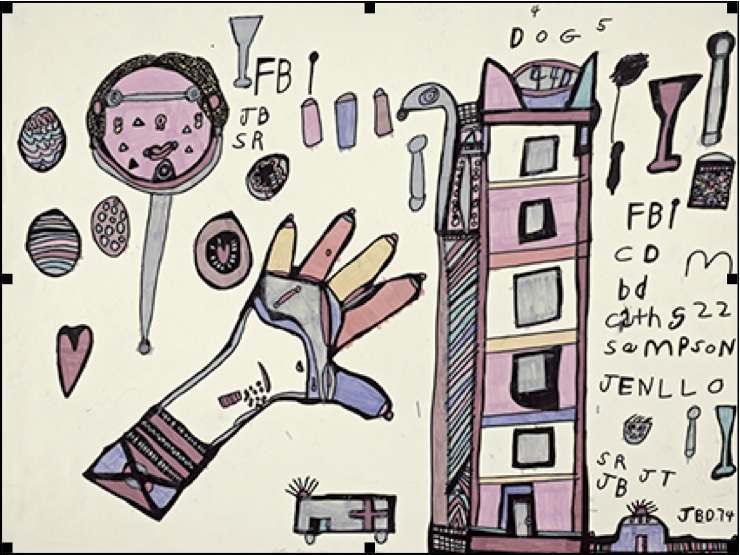This week we will be hearing from senior student docents before they graduate on Sunday. Today’s post comes from Sadie Burzan. Sadie has been a docent at the Art Center for the past year.

In my junior year, I learned that museums are not neutral. I was taking a class called Anthropology of Art (one of my favorite classes at Vassar), where we often talked about the role of the museum. I had never really thought before about wall labels and their content, and how they reflect the intent of the museum curators. I reflected on an exhibit we had at the Art Center in the spring of that year (2009), called Faith and Fantasy in Outsider Art from the Permanent Collection. I had such a hard time wrapping my mind around this art – it was so endearing to me, but everything I had learned revolted against the idea of finding it cute or sweet. I wanted to consider it in the same way that I would consider art made intentionally for museums and galleries.
One thing that made this difficult is that most Outsider Art exhibits give the viewer more biographical information than they would usually for say, Jackson Pollock and other artists within the mainstream art tradition. Most Outsider artists are, according to curator Mary-Kay Lombino in her essay to the exhibition guide, “self-taught artists who are visionaries, spiritualists, eccentric recluses, folk artists, psychiatric patients, inmates, and others living beyond the imposed borders of society and the art market.” Including biographical information on wall labels informs the viewer of why the artist is doing what he or she is doing. This information gives the viewer a way in, a way to see the complexity that is perhaps obscured by the straightforward style of most Outsider artists.
Still, I consider what would happen if the wall labels for Outsider artists were just like those for Jackson Pollock. Or what if Pollock’s label included his biographical information? How much should museums tell us, and how do they decide what exactly to tell us? I have been a student docent here for a year, working closely with our collection and frequently spending time in the galleries. These questions are even more interesting now that I have to actively think about audience reception and what is important for the visitor to know. Though the focus of museums is the history of the objects that they have, there is so much to be discovered in the ways and reasons that they display what they do. I have every intention of continuing to spend time in museums outside of Vassar (and of course returning from time to time to the Frances Lehman Loeb Art Center), and I will always keep these questions in my mind.




